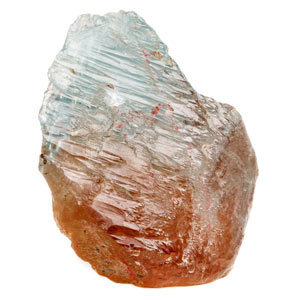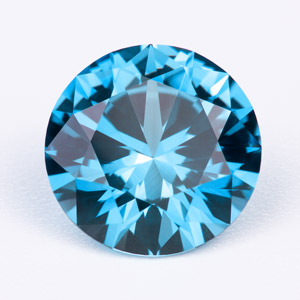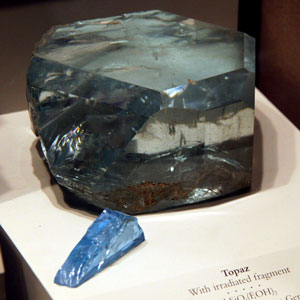topaz
Topaz, a captivating gemstone, draws its name from the ancient Sanskrit word "tapas," signifying fire. Composed of aluminium fluorosilicate, topaz displays a diverse range of natural colours, including golden yellows, blues, pinks, and colourless varieties.
Geologically, topaz forms in granite and rhyolite rocks, typically appearing as prismatic crystals within cavities and fissures. Notable sources of topaz include Brazil, Sri Lanka, and the United States.
What distinguishes topaz is its remarkable hardness, ranking 8 on the Mohs scale, which makes it a durable and highly suitable gemstone for various jewellery applications. Blue topaz, often heat-treated to enhance its colour, has become particularly popular as an affordable alternative to other blue gemstones.
One fascinating fact about topaz is its historical significance as a symbol of love and affection. Its rich history, diverse natural colours, and enduring popularity continue to make it a highly sought-after gemstone in the world of jewellery and gem collecting.
Click on the terms in the table below to discover their meaning



Click on the terms in the table below to discover their meaning
| Name | Topaz |
|---|---|
| Category |
Nesosilicate |
| Chemical Formula |
Al2SiO4 |
| IMA Symbol | Tpz |
| Crystal System | Orthorhombic |
| Crystal Habit | Well-formed crystals common, typically morphologically complex, long to short prismatic; prism faces commonly vertically striated, with etch and growth figures on non-prism faces; columnar, compact, massive |
| Twinning | Rare |
| Cleavage | Perfect |
| Fracture | Subconchoidal to uneven |
| Tenacity | Brittle |
| Hardness (Moh's Scale) |
8 (defining mineral) |
| Specific Gravity | 3.49 - 3.57 |
| Diaphaneity | Transparent to opaque with inclusions |
| Colour | Colourless, yellow, orange, red, pink, violet, blue, green, brown, grey, bicolour |
| Streak | White |
| Lustre | Vitreous |
| Optical Class | Biaxial (+) |
| Refractive index | nα = 1.606 - 1.634 |
| nβ = 1.609 - 1.637 | |
| nγ = 1.616 - 1.644 | |
| Birefringence | δ = 0.010 |
| Dispersion | Rd = 0.014 |
| Pleochroism | X = yellow; Y = yellow, violet, reddish; Z = violet, bluish, yellow, pink |
| Clarity | Type I |
| Notable Varieties | Blue Topaz (Sky Blue, Swiss Blue, London Blue), Imperial Topaz, |
References
Hudson Institute of Mineralogy. (2023). Topaz. Retrieved from Mindat.org: https://
Mineralogical Society of America. (2001). Topaz. In J. W. Anthony, R. A. Bideaux, K. W. Bladh, & M. C. Nichols (Eds.), Handbook of Mineralogy. Chantilly, VA 20151-1110, USA: Mineralogical Society of America. Retrieved from https://
Schumann, W. (2013). Gemstones of the World (17th ed.). (D. Shea, & N. Shea, Trans.) New York: Stirling Publishing Company.